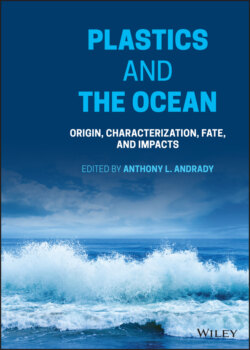Читать книгу Plastics and the Ocean - Группа авторов - Страница 31
Box 1.3 Paper or Plastic?
ОглавлениеA cradle‐to‐grave LCA study in the US (Chet and Yaros 2014) compared the environmental impacts of HDPE bags, biodegradable PE/PLA bags, and Kraft paper bags (with 30% recycled fiber content). The embodied energy for the HDPE bag was 71% lower, and the gobal warming gas (GWG) emissions, 50% lower, compared to the heavier paper bag. Water demand in the manufacture of the HDPE bags was only ~5% of that used to make the paper bags. A 2018 Danish study (DEPA 2018) that included 7 bag types, as well as a 2011 British study (Edwards and Fry 2011), were in general agreement with the conclusions. A plastic bag was the better choice based on these criteria.
The two main problems with HDPE bags, not captured in such studies, are the recalcitrance of plastic bag litter in the environment (not an issue with biodegradable paper bags) and the toxicity of water/air emissions from the manufacture of either type of bag. The acid rain emissions (NOx and SOx) for HDPE bags was ~11% of that associated with paper bags (Chaffee and Yaros 2014). These values are are highly variable, depending on the location of manufacture and consumer littering behavior, and therefore difficult to quantify. The debate on whether the paper or the plastic grocery bags are better for the environment has been in the news for years. With ~5 trillion paper bags used globally each year (or over 150 000 bags a second!) clear guidance to the conscientious consumer will help the environment.
